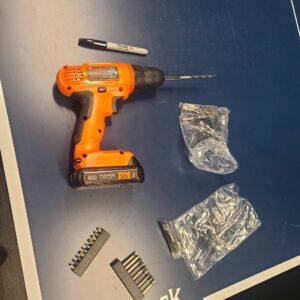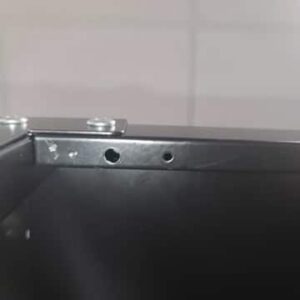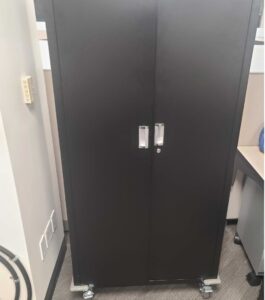Share Via
Overview
As with many startups, employees often wear many hats as resources are limited. In this hat, one winter day, I was Calvin the Cabinet Builder. While building a cabinet may be a left-field comparison to deploying current Network as a Service (NaaS) offerings, they have many similar characteristics. Lessons learned here can be applicable to current NaaS offering and to traditional CapEx-based networks.
Building a cabinet
The first rule when building a cabinet: never expect it to be simple. After ordering the cabinet, my first surprise when it arrived was that it came in two boxes, not one. This was unexpected, but not a showstopper. After opening the boxes, I realized that the combination of complex processes, a variety of parts, and poorly cut metal doors that misalign have created one thing: a long and frustrating afternoon that leads into the long evening.
Most of the installation steps go by without a lot of hassle until I come across installing the back panel of the cabinets. I struggle for 20 minutes to ensure the back panel and all the small parts attached to it do not disconnect and align properly, then finally I hear a click. A sigh of relief can be heard as I move to the next step, installing the two doors. As I inspected the door, gathered the necessary parts, and got ready to install the door, I realized one thing. There was no hole on top of the cabinet (Step 2 in Figure A). This meant I had to drill one myself. I could not believe it. Don’t these cabinets come FULLY prepped for installation? Another 20 minutes was spent making sure I did not miss something, trying various methods before realizing the situation is valid. I now need to buy or acquire a drill from somewhere.

Figure A: Instruction Manual
Once the drill was assembled (Figure B), I started drilling.

Figure B: Drill set
This step took multiple attempts, but I was finally able to drill a hole (Figure C) and attached the door to the cabinet frame. As I repeated the step for the second time for the other door, I was relieved when it was completed and connected.

Figure C: Drilling the cabinet door hole
As I rolled the cabinet to my desk (Figure D), I was finally done.

Figure D: The finished cabinet
Takeaway: The entire process of building a cabinet cost more than I thought emotionally, financially, and operationally. Like building an enterprise network, hidden costs may often surprise IT teams.
What is NaaS Infographic
Learn how NaaS by Nile can deliver enterprise wired and wireless LAN connectivity to your business completely as a service.
The similarities of building a cabinet and deploying a current NaaS offering in the campus network
As I began putting these parts together, I wondered how much it would cost me to hire a professional to do this job and how much easier it would be. Like deploying an enterprise network, often the goal is to connect and secure the business and its goals, products, and services with applications, employees, or end users through layers of networking. Due to the complex nature of owning and operating the network, many organizations are beginning to look for alternatives.
Gartner predicts on-premises NaaS will be adopted by 15% of all enterprises by the end of 2024, up from under 2% in 2022
However, as with many of these alternative offerings, you do not realize there is a catch until you start bringing up the network and operating it. Similar to when I found out that I needed to buy a drill and drill a hole to install the doors to the cabinet (Figure B), many CapEx-based networks and current NaaS offerings require hidden operational costs that are not realized until it is too late.
Current NaaS market overview
While any networking functionality can be offered as NaaS, current offerings typically fall into the following models:
- NaaS with an embedded lease
- Hardware as a Service (HaaS)
“NaaS” with a traditional financing model may leverage existing network appliances and package it up with software and support with an embedded lease. HaaS, on the other hand, manages the lifecycle of the hardware for you, from setup to refresh of the hardware. Still, in both cases, the lifecycle remains incomplete as software upgrades and security patches are still the customer’s responsibility. Additionally, while these two distinct types of offerings may alleviate some of an organization’s network pain points, they may have hidden costs behind them. Not only do they add financial complexities to the business, but many of them also still embrace traditional hardware with operational and technical complexities. As mentioned in the above section, the enterprise might not be aware of these hidden costs until they have signed the service contract and brought up the network. Many of these offerings lack the adaptability a true NaaS might have.
Gartner describes a true NaaS as having the following characteristics:
- Highly automated
- Pricing is on a pay-for-use basis or as a subscription based on use metrics
- Dynamic scale up or down
Even with these characteristics, a NaaS is still short of realizing as a Service (aaS) benefits like:
Takeaway:
- Current NaaS offerings typically still require heavy lifting to operate and may have hidden costs associated with operating them. Enterprises should have stringent criteria with questions like:
- Is it flexible to help my business scale based on usage?
- Does the NaaS offering allow me to step away to focus on my business initiatives knowing that everything is cared for behind the scenes? Or will I still need a team of experts to manage and operate the network?
- Do I need to navigate through a maze of documentation to optimize my network or can my NaaS proactively detect and auto remediate any anomalies?
- Can my NaaS offer native security, or will I need to rely on 3rd party tools and bolt them into my architecture?
Nile Access Service
The Nile Access Service is a secure campus network delivered as a holistic service provided by Nile for enterprises. As a campus fNaaS designed to help organizations eliminate complexities within their campus networks, the Nile Access Service provides:
- Guaranteed network performance
- Zero trust security built into the service
- Complete network lifecycle management for the entire service duration
- Flexible consumption model
To learn more about the Nile Access Service, visit nilesecure.com.
Share Via



